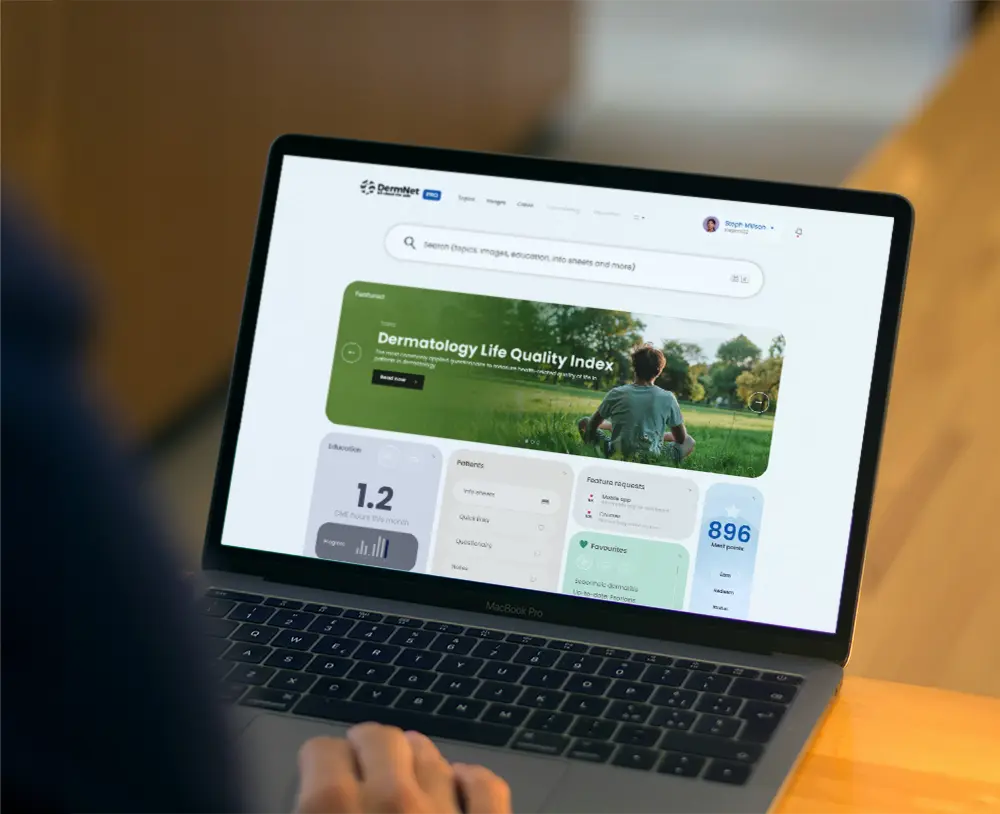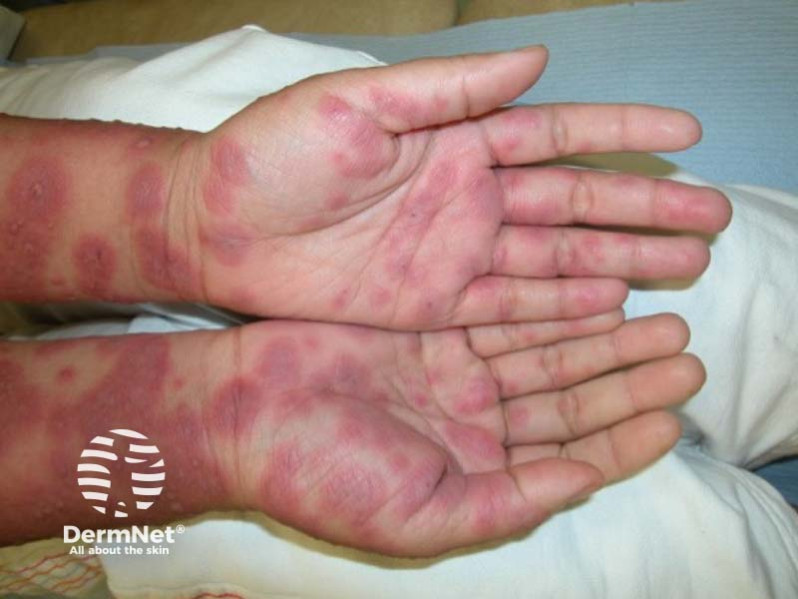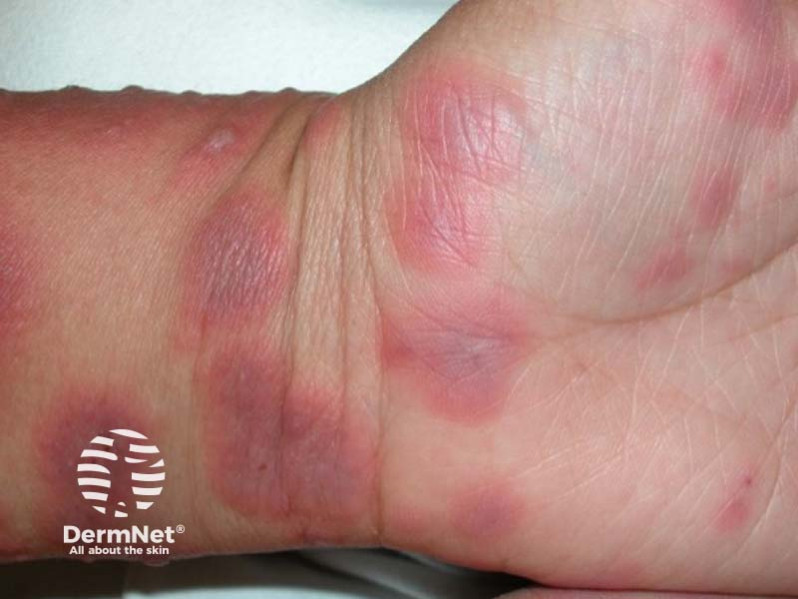Main menu
Common skin conditions

NEWS
Join DermNet PRO
Read more
Quick links
Author: Dr Aditi Sinha, Royal Brompton Hospital, London (2025).
Images courtesy of Dr Ian Coulson, Consultant Dermatologist, United Kingdom.
Edited by the DermNet content department.


A 35-year-old man presented to the dermatology clinic for a troublesome eruption on both arms. It has been a recurring problem every 4 months, with each attack lasting 10 days. This bout has been the most severe. He explains to you that the lesions are slightly painful, and he is getting bothered by the recurrent itch.
He feels well in himself otherwise but did admit to having some coryzal symptoms last week which he put down to the weather.
There are concentric rings of reddish colour variation on the palms of the patient and moving up to the wrist (acral distribution). A few of the lesions show a central “bullseye” or target appearance.
This is erythema multiforme (EM). It is an immune-mediated reaction which can affect the skin and mucosae.
Other common places where erythema multiforme can occur are the upper arms and face. Ensure to appropriately expose the patient to assess for any other potential lesions. We are looking for the classic target lesions.
Ask about any previous bouts of cold sores as these are a common precipitant of erythema multiforme. There may be signs of a resolving herpetic lesion. Cold sores (herpes simplex virus) may be reactivated by sun exposure.
Whilst the most common cause of recurrent EM is herpes simplex virus type 1, many drugs can also cause erythema multiforme such as:
It is important to take a full history to review for any other chronic conditions, such as autoimmune disease.
Usually, erythema multiforme is self-limiting and the lesions fade over 2 weeks to a month. For milder rashes, patients can use topical treatments such as creams and topical corticosteroids.
In more severe cases, patients may need admission for regular wound care and, in some cases, may require oral corticosteroids. If oral lesions are severe, enteral fluids and feeding may be required for a short period.
Some patients can develop secondary bacterial infections and that may require oral antibiotics.
In our patient who is having recurrent attacks, we can consider giving aciclovir on a prophylactic basis and continue for at least 6 months.